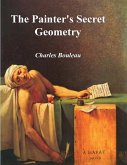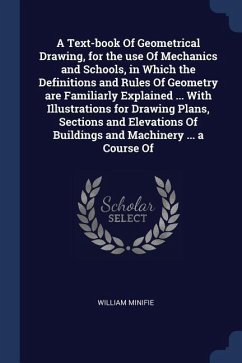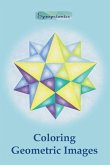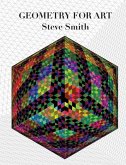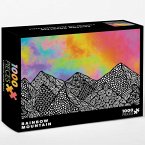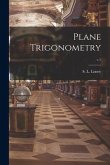Scott Sherman, Yossi Elran, Ann Schwartz
The Secret World of Flexagons
Fascinating Folded Paper Puzzles
Scott Sherman, Yossi Elran, Ann Schwartz
The Secret World of Flexagons
Fascinating Folded Paper Puzzles
- Broschiertes Buch
- Merkliste
- Auf die Merkliste
- Bewerten Bewerten
- Teilen
- Produkt teilen
- Produkterinnerung
- Produkterinnerung
Written in a clear, easy-to-understand, and conversational style; and enhanced with challenges and tips to broaden your flexagon skills and spark creativity, this book is a must for flexagon enthusiasts, teachers, students, libraries, mathematicians and everyone who loves to solve a good puzzle.
Andere Kunden interessierten sich auch für
![The Painter's Secret Geometry The Painter's Secret Geometry]() Charles BouleauThe Painter's Secret Geometry15,99 €
Charles BouleauThe Painter's Secret Geometry15,99 €![A Text-book Of Geometrical Drawing, for the use Of Mechanics and Schools, in Which the Definitions and Rules Of Geometry are Familiarly Explained ... A Text-book Of Geometrical Drawing, for the use Of Mechanics and Schools, in Which the Definitions and Rules Of Geometry are Familiarly Explained ...]() William MinifieA Text-book Of Geometrical Drawing, for the use Of Mechanics and Schools, in Which the Definitions and Rules Of Geometry are Familiarly Explained ...24,99 €
William MinifieA Text-book Of Geometrical Drawing, for the use Of Mechanics and Schools, in Which the Definitions and Rules Of Geometry are Familiarly Explained ...24,99 €![A Text Book of Geometrical Drawing A Text Book of Geometrical Drawing]() William MinifieA Text Book of Geometrical Drawing22,99 €
William MinifieA Text Book of Geometrical Drawing22,99 €![Coloring Geometric Images Coloring Geometric Images]() Sympsionics DesignColoring Geometric Images10,99 €
Sympsionics DesignColoring Geometric Images10,99 €![Geometry for Art Geometry for Art]() Steve SmithGeometry for Art51,99 €
Steve SmithGeometry for Art51,99 €![Rainbow Mountain: A Zenspire 1000-Piece Puzzle for Adults Rainbow Mountain: A Zenspire 1000-Piece Puzzle for Adults]() Rainbow Mountain: A Zenspire 1000-Piece Puzzle for Adults18,99 €
Rainbow Mountain: A Zenspire 1000-Piece Puzzle for Adults18,99 €![Plane Trigonometry; v.1 Plane Trigonometry; v.1]() Plane Trigonometry; v.125,99 €
Plane Trigonometry; v.125,99 €-
-
-
Written in a clear, easy-to-understand, and conversational style; and enhanced with challenges and tips to broaden your flexagon skills and spark creativity, this book is a must for flexagon enthusiasts, teachers, students, libraries, mathematicians and everyone who loves to solve a good puzzle.
Hinweis: Dieser Artikel kann nur an eine deutsche Lieferadresse ausgeliefert werden.
Hinweis: Dieser Artikel kann nur an eine deutsche Lieferadresse ausgeliefert werden.
Produktdetails
- Produktdetails
- AK Peters/CRC Recreational Mathematics Series
- Verlag: Taylor & Francis Ltd
- Seitenzahl: 314
- Erscheinungstermin: 20. März 2025
- Englisch
- Abmessung: 210mm x 280mm x 21mm
- Gewicht: 870g
- ISBN-13: 9781032553832
- ISBN-10: 1032553839
- Artikelnr.: 71811509
- Herstellerkennzeichnung
- Libri GmbH
- Europaallee 1
- 36244 Bad Hersfeld
- gpsr@libri.de
- AK Peters/CRC Recreational Mathematics Series
- Verlag: Taylor & Francis Ltd
- Seitenzahl: 314
- Erscheinungstermin: 20. März 2025
- Englisch
- Abmessung: 210mm x 280mm x 21mm
- Gewicht: 870g
- ISBN-13: 9781032553832
- ISBN-10: 1032553839
- Artikelnr.: 71811509
- Herstellerkennzeichnung
- Libri GmbH
- Europaallee 1
- 36244 Bad Hersfeld
- gpsr@libri.de
Scott Sherman is a leading software designer focused on building tools for seeing and understanding information, from computer-aided-design to diagramming to data visualization. He was a researcher and software engineering architect at Tableau, a data visualization company, where he built the first version of many essential tools including dashboards and highlighting. At Microsoft, he designed and built the layout engine for Microsoft Office's SmartArt feature. Scott has been fascinated with flexagons since he first learned about them from Martin Gardner's writings and has figured out techniques for generating a huge variety of new flexagons and flexes. He has also applied his software skills to create programs for exploring flexagon dynamics. He has given talks on various topics in recreational mathematics, including flexagon theory, at the Gathering for Gardner and Georgia Southern University. With Dr. Elran and Ann Schwartz, he co-led the 2019 Neil Shore Flexagon Workshop at the Davidson Institute, the educational arm of the Weizmann Institute of Science in Rehovot, Israel. He also is the author of an online, interactive book called Explorable Flexagons. Yossi Elran is a British-Israeli recreational mathematician at the Davidson Institute of Science Education, the educational arm of the Weizmann Institute of Science in Rehovot, Israel, and teaches various courses at the Western Galilee College in Israel. He holds a PhD in theoretical quantum chemistry and has done post-doctoral research on decoherence, one of the main challenges of quantum computing. Yossi frequently journeys nationally and globally, delivering engaging and captivating presentations to diverse audiences ranging from schools and universities to festivals and other events on various subjects, including recreational math, astronomy, quantum mechanics, the history and philosophy of science, and creativity. He has written many papers, is the author of Lewis Carroll's Cats and Rats and Other Puzzles with Interesting Tails, and Archimedes' Stomach and Other Puzzles You'll Love to Digest, and co-author of The Paper Puzzle Book. He is the creator of four popular "Future Learn" MOOC's on recreational math, two of them on flexagons, and two Ted-Ed puzzle videos that have reached nearly 20 million views. Yossi is a longtime member of the Gathering 4 Gardner Foundation, whose mission is to stimulate curiosity and the playful exchange of ideas and critical thinking in recreational math, magic, science, literature, and puzzles to preserve and extend the legacy of writer and polymath Martin Gardner. Ann Schwartz has created more than a dozen new flexagons. She has presented a new flexagon at the biennial Gathering for Gardner, which she has attended since 2006, and has given flexagon presentations and workshops at the National Museum of Mathematics (MOMATH) in New York City and that museum's MOVES conferences. In 2015 she was the guest speaker at the Recreational Math, Puzzles and Games Conference at the Davidson Institute of Science Education, the educational arm of the Weizmann Institute of Science in Rehovot, Israel; and in 2017 gave the only flexagon presentation at the Seventh International Meeting on Origami in Science, Mathematics and Education (7OSME) in Oxford. With Scott Sherman and Dr. Yossi Elran, Ann co-led the Neil Shore Flexagon Workshop at the Davidson Institute in 2019. She coauthored "The Hexa-Dodeca-Flexagon," a chapter in Homage to a Pied Puzzler (2009), and the chapter "Should We Call Them Flexa-Bands?" that was published in The Mathematics of Various Entertaining Subjects - Volume 3.
Introduction
Part One: Symmetric Flexes
1: The Pinch Flex
2: General Tips
3: More Faces
4: Triangle Tetraflexagon and Octaflexagon
5: Different Triangles
6: Pinch Flex Variations
7: The Book Flex
8: The Box Flex
Part Two: Asymmetric Flexes9: Flex Diagrams
10: The V-Flex
11: The Tuck Flex
12: The Flip Flex
13: The Pyramid Shuffle Flex
14: Breaking Down Flexes
15: Slot Flexes
Part Three: Learning about Flexagons16: Flexagon Naming
17: State Diagrams
18: Flex Sequences
19: Pat Notation
20: Atomic Flex Theory
21: Defining Flexagon and Flex
22: Groups and Flexagons
23: Flexagon Computers
24: Conrad and Hartline's Flexagon Theory
25: Les Pook's Flexagon Theory
26: Topology
27: Templates and Labels
Part Four: Exploring Flexagons28: Square Silver Octaflexagon
29: Hexagonal Bronze Dodecaflexagon
30: Hexagonal Silver Dodecaflexagon
31: Silver Bracelet
32: Octagonal Ring 14-flexagon
33: Flexagon Inspector
Part Five: Fun with Flexagons34: Decorating Flexagons
35: Flexagon Books
36: Flexagon Puzzles and Mazes
37: Flexagon Pop-ups
38: Cutting Flexagons
Epilogue
Appendices
A: Definitions
B: Flexagon Charts
C: Flex Compendium
Bibliography
Part One: Symmetric Flexes
1: The Pinch Flex
2: General Tips
3: More Faces
4: Triangle Tetraflexagon and Octaflexagon
5: Different Triangles
6: Pinch Flex Variations
7: The Book Flex
8: The Box Flex
Part Two: Asymmetric Flexes9: Flex Diagrams
10: The V-Flex
11: The Tuck Flex
12: The Flip Flex
13: The Pyramid Shuffle Flex
14: Breaking Down Flexes
15: Slot Flexes
Part Three: Learning about Flexagons16: Flexagon Naming
17: State Diagrams
18: Flex Sequences
19: Pat Notation
20: Atomic Flex Theory
21: Defining Flexagon and Flex
22: Groups and Flexagons
23: Flexagon Computers
24: Conrad and Hartline's Flexagon Theory
25: Les Pook's Flexagon Theory
26: Topology
27: Templates and Labels
Part Four: Exploring Flexagons28: Square Silver Octaflexagon
29: Hexagonal Bronze Dodecaflexagon
30: Hexagonal Silver Dodecaflexagon
31: Silver Bracelet
32: Octagonal Ring 14-flexagon
33: Flexagon Inspector
Part Five: Fun with Flexagons34: Decorating Flexagons
35: Flexagon Books
36: Flexagon Puzzles and Mazes
37: Flexagon Pop-ups
38: Cutting Flexagons
Epilogue
Appendices
A: Definitions
B: Flexagon Charts
C: Flex Compendium
Bibliography
Introduction
Part One: Symmetric Flexes
1: The Pinch Flex
2: General Tips
3: More Faces
4: Triangle Tetraflexagon and Octaflexagon
5: Different Triangles
6: Pinch Flex Variations
7: The Book Flex
8: The Box Flex
Part Two: Asymmetric Flexes9: Flex Diagrams
10: The V-Flex
11: The Tuck Flex
12: The Flip Flex
13: The Pyramid Shuffle Flex
14: Breaking Down Flexes
15: Slot Flexes
Part Three: Learning about Flexagons16: Flexagon Naming
17: State Diagrams
18: Flex Sequences
19: Pat Notation
20: Atomic Flex Theory
21: Defining Flexagon and Flex
22: Groups and Flexagons
23: Flexagon Computers
24: Conrad and Hartline's Flexagon Theory
25: Les Pook's Flexagon Theory
26: Topology
27: Templates and Labels
Part Four: Exploring Flexagons28: Square Silver Octaflexagon
29: Hexagonal Bronze Dodecaflexagon
30: Hexagonal Silver Dodecaflexagon
31: Silver Bracelet
32: Octagonal Ring 14-flexagon
33: Flexagon Inspector
Part Five: Fun with Flexagons34: Decorating Flexagons
35: Flexagon Books
36: Flexagon Puzzles and Mazes
37: Flexagon Pop-ups
38: Cutting Flexagons
Epilogue
Appendices
A: Definitions
B: Flexagon Charts
C: Flex Compendium
Bibliography
Part One: Symmetric Flexes
1: The Pinch Flex
2: General Tips
3: More Faces
4: Triangle Tetraflexagon and Octaflexagon
5: Different Triangles
6: Pinch Flex Variations
7: The Book Flex
8: The Box Flex
Part Two: Asymmetric Flexes9: Flex Diagrams
10: The V-Flex
11: The Tuck Flex
12: The Flip Flex
13: The Pyramid Shuffle Flex
14: Breaking Down Flexes
15: Slot Flexes
Part Three: Learning about Flexagons16: Flexagon Naming
17: State Diagrams
18: Flex Sequences
19: Pat Notation
20: Atomic Flex Theory
21: Defining Flexagon and Flex
22: Groups and Flexagons
23: Flexagon Computers
24: Conrad and Hartline's Flexagon Theory
25: Les Pook's Flexagon Theory
26: Topology
27: Templates and Labels
Part Four: Exploring Flexagons28: Square Silver Octaflexagon
29: Hexagonal Bronze Dodecaflexagon
30: Hexagonal Silver Dodecaflexagon
31: Silver Bracelet
32: Octagonal Ring 14-flexagon
33: Flexagon Inspector
Part Five: Fun with Flexagons34: Decorating Flexagons
35: Flexagon Books
36: Flexagon Puzzles and Mazes
37: Flexagon Pop-ups
38: Cutting Flexagons
Epilogue
Appendices
A: Definitions
B: Flexagon Charts
C: Flex Compendium
Bibliography


